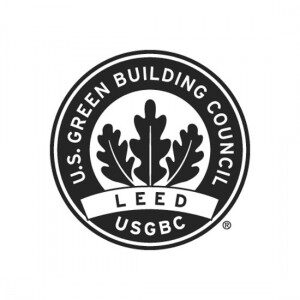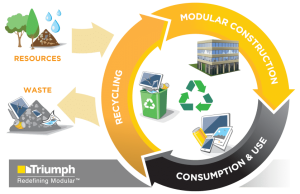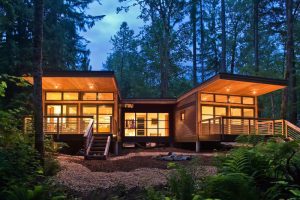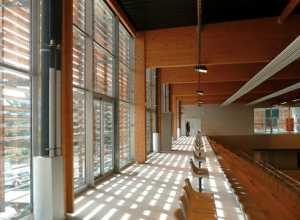Since the LEED certification standard was officially validated in the year 2000, a growing population continues to seek an understanding of the criteria for LEED building.
LEED certification validates that a building project has been built with “green” features and that the building will operate in an efficient manner.
There are 4 LEED Certification Levels that determine how green and efficient a building actually is. We’ve outlined these certification levels below.
LEED Certification
- Certified 40–49 points
- Silver 50–59 points
- Gold 60–79 points
- Platinum 80 points and above
Criteria for LEED Certification Level
To be LEED-certified, a building’s construction procedures are measured in six different categories. A score is tallied from each of these six categories to make up the overall ranking. The scoring system is based on 100 base points, six Innovation and Design points, and four Regional Priority points. The following are the categories in question:
- Sustainable Sites
- Water Efficiency
- Energy and Atmosphere
- Materials and Resources
- Indoor Environmental Quality
- Innovation in Design
In addition to this point scoring system, builders can gain points or additional credits for addressing regionally beneficial design implementations. An example of this would be using insulated glass in desert regions as it would reduce heating and cooling costs.
How LEED Levels Are Created
LEED certification levels are created by USGBC members and volunteers. This committee continues to improve and modify the green building industry and has just adopted the next stage “LEED v4”. USGBC announced LEED v4 passed ballot on July 2nd, the final overall vote was 86 percent in favor of adopting and it will launch this fall. If you are interested in learning more download the LEED v4 User Guide.
The LEED industry is continually evolving and there are various business sectors that can attain LEED certification. The following are different sectors of LEED certification.
- LEED for New Construction & Major Renovations – This rating system can be applied to commercial and residential buildings that are four stories or taller and don’t currently serve the same purpose as any of the categories listed below.
- LEED for Core & Shell – This can be applied for core and shell buildings.
- LEED for Schools – This LEED certification criterion is based on K-12 schools and addresses safe, healthy, and efficient working spaces. However, LEED for schools can also be used for higher education spaces and even non-academic structures that are on-site.
- LEED for Retail & New Construction – This certification is designed for new retail stores & environments.
- LEED for Healthcare – This LEED certification is for new buildings and the renovation of older hospitals, long-term care facilities, and research centers.
- LEED for Commercial Interiors – This certification designed for tenants of office buildings who lease their space or do not occupy the entire building.
- LEED for Retail – This certification is for the interior of commercial retail space. Here, you’ll find everything from restaurants and banks to clothing and electronics stores.
- LEED for Existing Buildings – This LEED certification is for an existing building that is working on becoming more efficient through the use of less energy, water, and natural resources.
- LEED for Homes – This LEED certification recognizes that a home is built to be energy and resource-efficient.
- LEED for Neighborhood Development – This certification recognizes that a building is constructed in a smart location, is near public transportation, and that the urban structure is energy efficient.
- LEED for Data Centers – This LEED certification concerns buildings containing valuable computing equipment often used for various important purposes, such as data storage.
- LEED for the Hospitality Sector – Concerns all lodging businesses from smaller motels and inns to larger, high-capacity hotels.
As you can see, LEED certifications aren’t just for brand new commercial buildings. The wide variety of LEED certification categories means that just about any building can receive a LEED certification when the specific criterion is followed.
As green building practices become more mainstream, we will continue to see modifications to the LEED certification scoring process. As the guidelines become more demanding we’ll also see the construction industry build towards a better future. If you have any further questions about LEED certification criteria please feel free to connect with us via Twitter, Facebook, email, or by phone.





